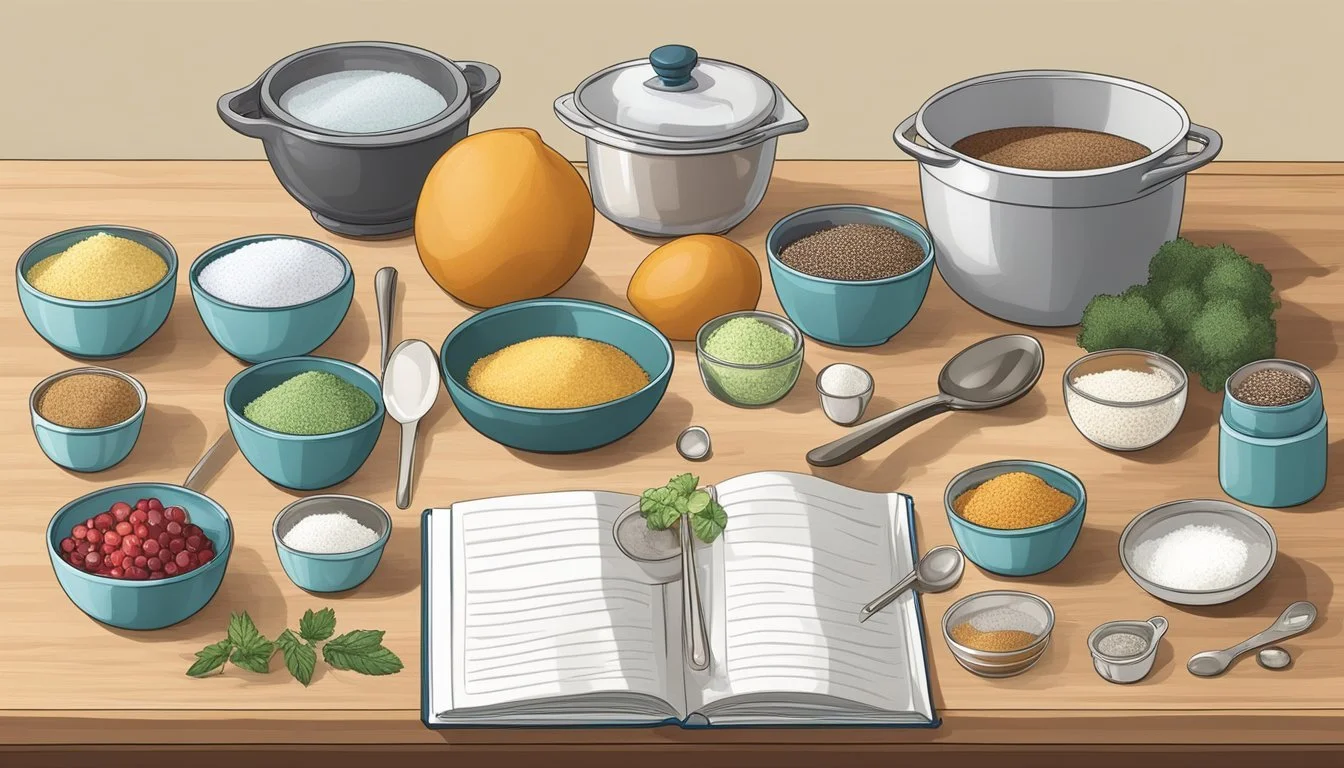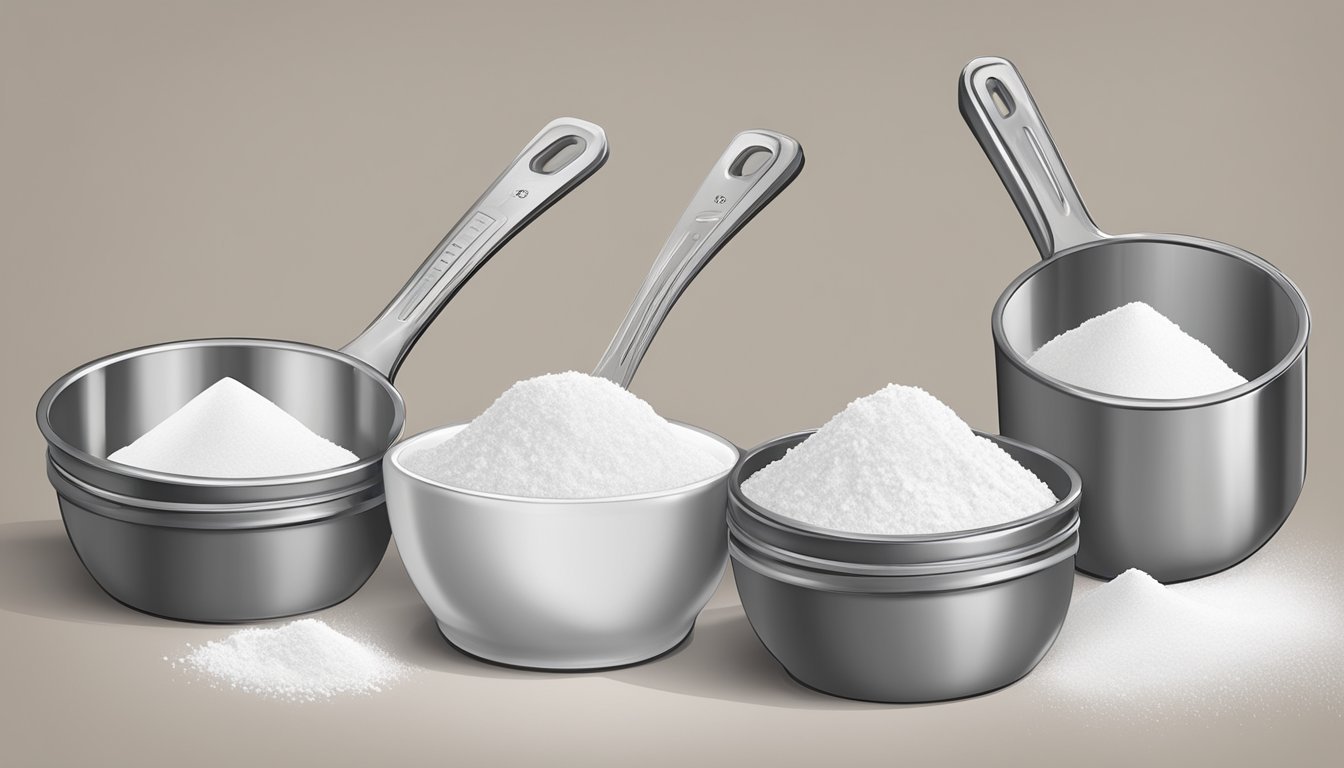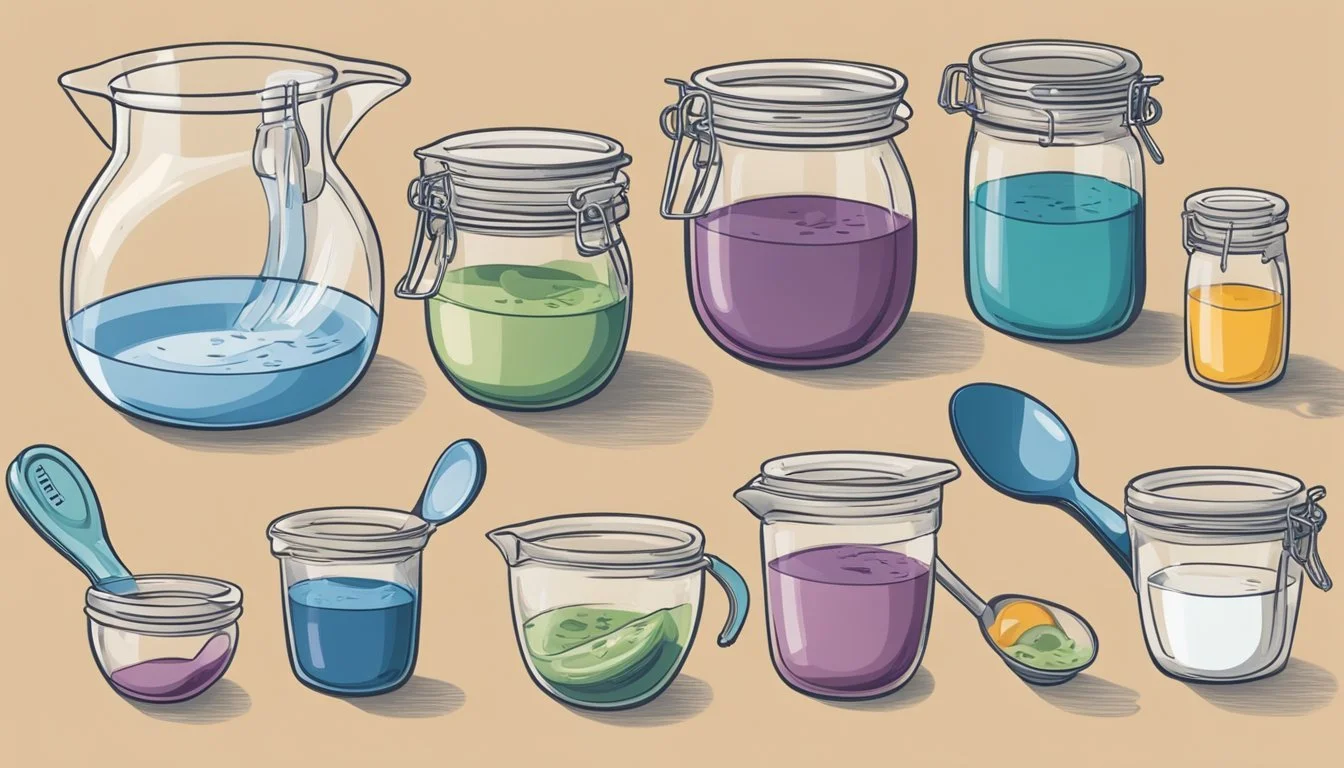How to Measure Ingredients for Homemade Cake Topping
The Precise Guide
Measuring ingredients accurately is crucial when making homemade cake toppings. Precision plays a key role in achieving the desired texture and flavor, especially because toppings can make or break the overall taste of a cake. A topping that's too sweet, too dense, or too runny can compromise the integrity of even the most well-made cake base.
To ensure that homemade cake toppings are perfect, it's important to use the correct measuring techniques for the various ingredients involved. Dry ingredients like flour and sugar demand a different approach compared to liquids like vanilla extract or heavy cream. Toppings range from simple whipped cream to more complex mixtures involving multiple ingredients, such as buttery crumb toppings or rich chocolate ganache, each requiring their own specific method of measurement.
The process begins before the act of measuring itself. Bakers should start with the proper tools: measuring cups for dry ingredients and liquids, measuring spoons for small quantities, and a scale for precision. They must understand the distinction between weight and volume measurements and when to use each. With these tools and knowledge, bakers can ensure their toppings will enhance their cakes with the intended flavor and consistency.
Understanding Recipe Basics
When it comes to creating a delectable cake topping, precise measurement and understanding of key components are vital. Ensuring that ingredients combine correctly is paramount for the perfect finish to your cake.
Identifying Key Ingredients
The cornerstone of any cake topping, whether it's a crumb topping, whipped cream, glaze, frosting, or streusel, typically involves a combination of butter, sugar, flour, and possibly milk or eggs. Ingredients like vanilla can add flavor depth, while fruit can introduce natural sweetness and texture.
Butter: Provides richness and helps in achieving a smooth consistency.
Sugar: Adds sweetness and, depending on the type, can affect texture.
Flour: Acts as a thickener and provides structure, especially in streusel or crumb toppings.
Eggs: Offer stability and can act as an emulsifier in toppings like frosting.
Vanilla and Fruit: Contribute unique flavors and aromatics.
Essential Baking Tools
Precise measurement is crucial in baking; therefore, having the right tools is non-negotiable. Here are basic yet essential tools for measuring ingredients in baking:
Measuring Cups and Spoons: Necessary for quantifying both dry and liquid ingredients.
Cups: 1 cup, 1/2 cup, 1/3 cup, 1/4 cup
Spoons: 1 tablespoon, 1 teaspoon, 1/2 teaspoon, 1/4 teaspoon
Kitchen Scale: For utmost accuracy, a kitchen scale can ensure that measurements are exact, it's especially useful for ingredients that can be easily compressed or aerated, like flour.
Tool Use Case Measuring Cups Best for liquids and measuring to the brim. Measuring Spoons Ideal for small quantities of dry or liquid ingredients. Kitchen Scale Perfect for precision, especially in recipes requiring grams or ounces.
Recognizing Different Types of Toppings
The method of measuring ingredients can vary based on the type of topping being prepared. Here's how diverse toppings benefit from different preparation processes:
Crumb Topping and Streusel: These require a crumbly texture often achieved by cutting butter into sugar and flour until reaching desired consistency.
Whipped Cream: Requires precise measurement of sugar and vanilla added to cream before whipping to soft or stiff peaks.
Glaze: A thin mixture where the liquid-to-sugar ratio must be exact to achieve the proper drizzling consistency.
Frosting: Typically combines butter, powdered sugar, milk, and flavorings measured carefully to achieve a smooth, spreadable texture.
Each topping has its unique characteristics that can be perfected by following the given recipe's specific measurement process.
Preparation Strategies
Proper measuring and preparation of ingredients are crucial when making a homemade cake topping. Consistency and care in these early steps help ensure the topping's taste and texture are as intended.
Decoding Measurement Units
Accurate measurements are the foundation of successful cake toppings. Common units include:
Volume measurements: teaspoons (tsp), tablespoons (tbsp), and cups (c).
Weight measurements: ounces (oz) and grams (g).
For precision, especially with dry ingredients like flour or sugar, using a kitchen scale to measure in grams is advised.
Assembling Wet and Dry Ingredients
The separation of wet and dry ingredients ensures accurate measurements and a harmonious blend. Prepare wet ingredients such as eggs, melted butter, sour cream, buttermilk, and honey at room temperature. Dry ingredients might include sugar, cocoa powder, and coffee or espresso for flavoring.
Wet Ingredients Table (measured in cups or grams):
Ingredient Cups Grams Water 1/2 c 118 g Eggs 3 (medium) ~50 g each Melted butter 1/4 c 57 g Buttermilk 1 c 245 g
Dry Ingredients Table (measured in teaspoons, tablespoons, cups, or grams):
Ingredient Teaspoons (tsp) Tablespoons (tbsp) Cups (c) Grams (g) Cocoa Powder - - 3/4 c 90 g Granulated Sugar - - 1 c 200 g Coffee Powder 1 tsp - - 2 g
Implementing Consistent Measuring Techniques
For dry ingredients, use the spoon and level method: spoon the ingredient into the correct measuring cup and level it off with a straight edge. This method helps avoid packing down ingredients which can lead to inaccuracies. When measuring wet ingredients, use clear measuring cups designed for liquids and check the measurement at eye level.
Adjusting Ingredients for Dietary Preferences
Those with dietary preferences or restrictions will adjust ingredients accordingly, while still maintaining measurement accuracy:
Replace butter with oils for less saturated fat.
Substitute white sugar with alternatives like honey to lower calories or carbohydrates.
Use low-fat or non-dairy alternatives such as almond or soy milk to replace buttermilk or sour cream for less cholesterol or sodium.
Incorporating substitutes often requires recalculating the nutritional information to maintain protein, fat, fiber, and other values in the desired range.
Mixing and Cooking Guidelines
When preparing a homemade cake topping, one must pay careful attention to the mixing process to achieve the desired texture, as well as the baking conditions to ensure consistent results across all baked goods, such as crumb cake, muffins, and banana bread.
Achieving the Correct Texture
For a uniform cake topping, it's essential to mix ingredients until they are evenly combined. This typically involves starting with the dry ingredients like all-purpose flour or cake flour in a small bowl. Adding baking powder or baking soda should be done with care, measuring accurately to avoid imbalances that can affect the texture. When combining wet and dry ingredients, one must mix just enough to integrate but avoid over-mixing, which can lead to tough desserts.
Baking Conditions and Time
The success of any dessert depends greatly on adhering to proper baking conditions. Always preheat the oven to the required temperature before placing your baking dish inside. Baking time varies based on the dessert—bread may require longer than a light cake. Inserting a toothpick into the center that comes out clean is a reliable test for doneness. Keeping the oven door closed during the majority of baking time helps maintain a stable temperature and prevents the topping from falling flat.
Finishing Touches
In the final stage of cake decoration, one focuses on enhancing the flavors and aesthetics of toppings to ensure that each cake is both visually appealing and delicious to the palate.
Creating Unique Flavor Profiles
A cake's topping can make it stand out through the use of unique flavor profiles. To craft a topping with depth, one might combine powdered sugar with fragrant ground cinnamon or infuse whipped cream with honey for a subtle sweetness. Citrusy glazes made from lemon or orange zest contribute a refreshing twist, while sour cream adds a tang that complements fruit-based toppings.
Decorating Techniques
Effective decorating techniques enhance visual appeal. For a textured look, a streusel mixture of flour, brown sugar, and cinnamon can be sprinkled over fruit fillings. Nuts offer a crunchy contrast to the softness of the cake when used as a garnish. Even dustings of confectioners' sugar create an elegant finish with minimal effort.
Finalizing with Glazing or Cream
One may finalize cakes with a glazing or cream to lock in flavor and improve sheet appeal. Key choices include a glaze made of confectioners' sugar and milk, which should be drizzled lightly so as not to overwhelm the other flavors. Light brushing with syrup or liqueur can also elevate the cake's taste, while a dollop of whipped cream serves as a classic finish.
Serving and Presentation Tips
Serving and presentation can dictate the overall reception of the cake. The topping should be applied with care to maintain an attractive presentation. For individual servings, consider using a scoop when adding toppings like whipped cream or fruit compotes, ensuring consistency across slices.
Specialty Toppings
Exploring specialty toppings can transform an ordinary cake into an extraordinary dessert. Fruit toppings such as blueberries, raspberries, or diced apples add a fresh and fruity element. Layering granulated, light brown, or powdered sugars with salt amplifies the flavor profile, making the topping not just a sweet addition but also a harmonious component of the overall dessert.
Cleanup and Storage
After preparing a homemade cake topping, it's essential to manage cleanup and storage efficiently to maintain hygiene and ingredient quality. This includes safe food handling, ensuring freshness, and addressing common storage questions.
Safe Food Handling
During cleanup, one should thoroughly wash all equipment used in the preparation of the cake topping. This includes mixing bowls, utensils, and measuring tools. They should be cleaned with hot, soapy water or placed in the dishwasher to eliminate any food residue and prevent bacterial growth. For any remaining topping, one must transfer it to an airtight container before refrigerating.
Maintaining Freshness and Quality
To safeguard the freshness and quality of the cake topping, refrigeration is critical. The topping should be stored in an airtight container to prevent it from absorbing odors and flavors from other foods in the refrigerator. It also helps to retain moisture, making sure the topping remains at its best until needed. The shelf life of the topping will vary based on the ingredients used; one should refer to the recipe card for specific storage tips.
Answering Common Questions
FAQ: How long can I store homemade cake topping?
Typically, a homemade cake topping can be kept in the refrigerator for up to five days. However, for exact timeframes, one should consult the recipe card, as different ingredients can affect longevity.FAQ: Can I freeze the cake topping?
Many cake toppings can be frozen for longer storage. It should be placed in an airtight container or heavy-duty freezer bag. When ready to use, one should thaw it in the refrigerator and stir it well before applying to the cake.






